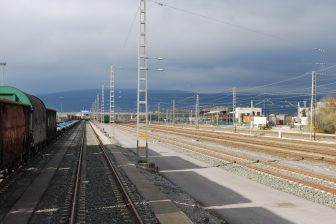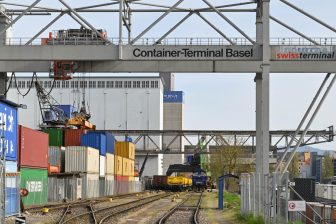
ERTMS operational on half of TEN-T corridors by 2023
Half of the Core TEN-T Network Corridors that are so critical to the freight market will be equipped with the European Rail Traffic Management System (ERTMS) by 2023, says a new version of the ERTMS Deployment Plan. The European Commission will then set out a precise timetable for the remaining corridors between 2024 and 2030.
Designed to ensure the safety of all trains travelling across European borders, ERTMS – which is already operational in some countries – enables equipment installed on board to continuously supervise the maximum permitted speed and give the driver all the necessary information needed to operate cab signalling.
Traffic volumes
It was 2009 when the first Deployment Plan was established, identifying six ERTMS corridors that represented the highest freight traffic volumes. The implementation deadlines were 2015 and 2020, which means that a significant part of those corridors should now have been finalised. But, the EC concedes, ‘this is unfortunately not the case’.
The commission says it was ‘clear already’ in 2013 that many member states would not be able to adhere to the deadlines laid out, due to shortage of financing, limited numbers of experts such as engineers and drivers, technical problems, lack of trust in the system, and resistance to change. So in 2014 the deadlines were revised, and the original six ERTMS corridors extended to the nine Core TEN-T Network Corridors.
Phased implementation
The updated deployment plan will, says the commission, ‘facilitate the investment and resource planning of railway undertakings and infrastructure managers’.
Violeta Bulc, Commissioner for Transport, said: “The European Rail Traffic Management System makes a direct contribution to the competitiveness and the safety of European railways. The deployment plan adopted provides for a phased implementation along the European rail network, bringing us closer to a fully interoperable single European rail area, where trains can more easily travel across borders.”
Timely deployment
Karel Vinck, European ERTMS Coordinator, added: “All member states have accepted ERTMS as the signalling system in Europe. It is ready to be implemented from a technical point of view and through implementing the recently adopted deployment plan we can ensure the timely deployment of ERTMS.”
The aim is that introducing a standardised European signalling system will replace 25 different national signalling systems and remove one of the main bottlenecks of an interoperable European railway network. Currently trains cannot cross borders without stopping due to the different national signalling systems in operation. ERTMS makes the systems interoperable. Another benefit is the higher safety level that ERTMS provides compared with the vast majority of the existing national systems.
ERTMS implementation enables higher speeds and reduces the distance between operating trains that leads to direct increases of capacity and productivity. ERTMS-equipped trains can be operated with a higher rate of reliability and punctuality, which contributes to modal shift.
Several member states have already been very proactive in terms of rolling out the technology, and making plans for its implementation across their rail networks. Belgium has been deploying ERTMS on its entire network since 2010, while Italy, Luxembourg, Spain and Austria were also early investors in ERTMS. The likes of Hungary, Poland, Romania and Slovenia will equip major parts of their corridors by 2023.





